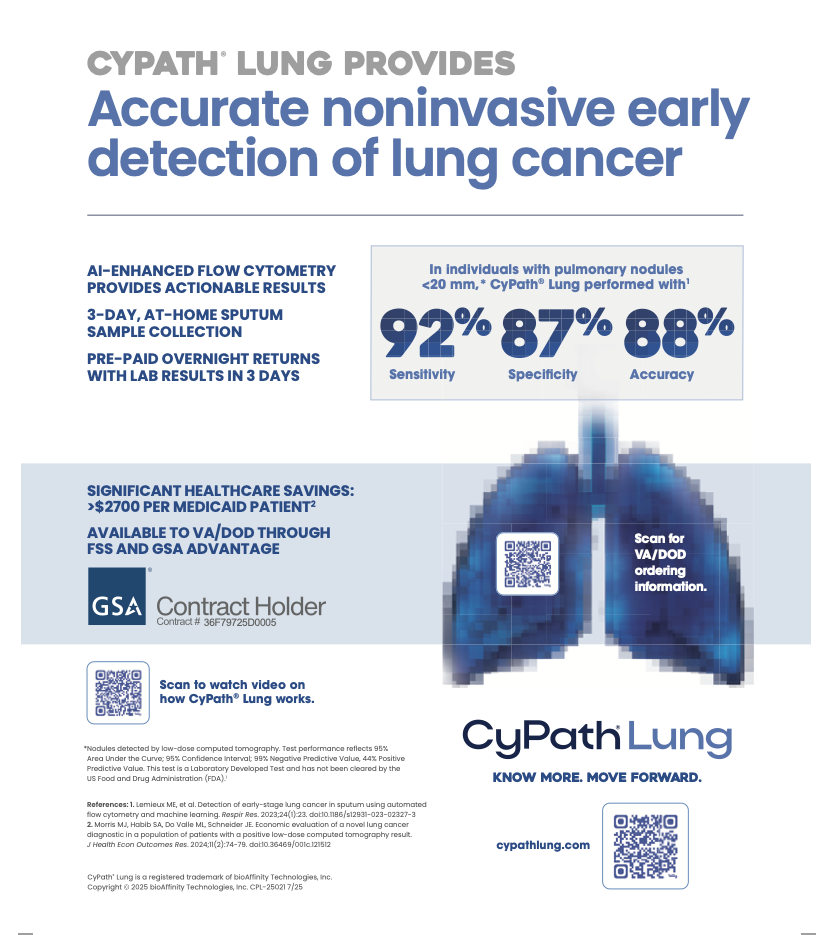“Meso-tetra (4-carboMeso-tetra (4-carboxyphenyl) porphyrin (TCPP) is taken up in cancer cells by the CD320 receptor”
International Conference on Porphyrins and Phthalocyanines (ICPP) ICPP-11, June 26 through July 2, 2021
Authors
David J. Elzi, William E. Bauta, Jamila R. Sanchez, Trisha Das, Shweta Mogare, Peter Zannes Fatland, and Vivienne I. Rebel
Description
The poster presents the novel mechanism by which the porphyrin TCPP, which is used in bioAffinity Technologies’ non-invasive test for the early detection of lung cancer, is incorporated into cancer cells. These discoveries have furthered our understanding of TCPP for use in diagnostics including the Company’s first product, CyPath® Lung, a flow cytometry test used to diagnose lung cancer at an early stage.
Abstract
Porphyrins have been used successfully to treat and diagnose cancer, yet the mechanism of how porphyrins are selectively taken up and how they are retained by cancer cells compared to other cells remains poorly understood. Knowledge about the cellular uptake and retention mechanisms of porphyrins can be used to design more effective porphyrin-based diagnostics and therapeutics. We designed a flow cytometry assay to measure the cellular incorporation of meso-tetra (4-carboxyphenyl) porphyrin (TCPP) into cancer cell lines.
We choose to study TCPP because it is currently used in a diagnostic assay for the early detection on lung cancer (1). Cell and molecular biology approaches show that TCPP enters cancer cells by a clathrin-mediated-endocytosis pathway. The LDL receptor, previously implicated in porphyrin uptake (2), only contributed modestly to TCPP uptake. In search of alternative TCPP entry mechanisms, we found that CD320, the cellular receptor for cobalamin/transcobalamin II (Cbl/TCN2) (3), bound strongly to TCPP (KD = 42 nM).
Short hairpin RNA-mediated knockdown of CD320 resulted in up to 40% decrease in TCPP uptake in cell lines derived from lung, breast, and prostate cancer. The functional cellular uptake studies, combined with the results of the binding assay and other immunofluorescence microscopy studies, support our hypothesis that TCPP binds to CD320 and uses this receptor to enter cancer cells. Given that cancer cells over express CD320 (4), our research provides a reason for why TCPP accumulates in cancer cells.

